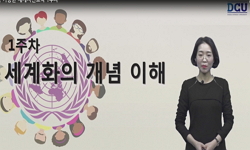This study aims to examine student’s strike during the Japanese colonial period not from the one-sided perspective so called Anti-Japanese movement, but from the efforts and struggle of students who attempted to address comprehensive dissatisfaction...
http://chineseinput.net/에서 pinyin(병음)방식으로 중국어를 변환할 수 있습니다.
변환된 중국어를 복사하여 사용하시면 됩니다.
- 中文 을 입력하시려면 zhongwen을 입력하시고 space를누르시면됩니다.
- 北京 을 입력하시려면 beijing을 입력하시고 space를 누르시면 됩니다.

일제시기 고등보통학교 동맹휴학의 양상과 특징 = Characteristics and Aspects of Secondary School Student’s Strikes during Japanese Colonial Period
한글로보기https://www.riss.kr/link?id=A106351764
- 저자
- 발행기관
- 학술지명
- 권호사항
-
발행연도
2018
-
작성언어
-
-
주제어
동맹휴학 ; unified students strikes ; 요구조건 ; demands ; 학습권보장 ; learning rights ; 민족의식 ; national identity ; 인권보장 ; human rights
-
KDC
900
-
등재정보
KCI등재후보
-
자료형태
학술저널
-
수록면
215-275(61쪽)
- 제공처
-
0
상세조회 -
0
다운로드
부가정보
다국어 초록 (Multilingual Abstract)
This study aims to examine student’s strike during the Japanese colonial period not from the one-sided perspective so called Anti-Japanese movement, but from the efforts and struggle of students who attempted to address comprehensive dissatisfaction about the educational environment in that per iod. The demands and claims raised in the student’s strike in the secondary school were largely classified into three categories : Right to Learn, National identity, and Human right. The demands presented in the secondary school student’s strike could not be presented with simple phrases. In addition, ‘Right to Learn’, ‘National identity’, and ‘Human right’ were duplicated in their demands. A variety of requirements could mean that the student’s strike was not an in-itself liberal response to a particular event, The students of the secondary school who are the subjects of the student’s strike expressed collectively the complaints and demands of the various levels that had been recognized in multiple depth and aspects. There were various reasons why students rejected their teachers, and the biggest contributors were ‘teaching methods and qualifications’ and ‘discipline, punishment and treatment of students’. Teacher rejection in secondary school is understood as a result of growth in students’ modern consciousness, which teacher and student relationships became more horizontal.
동일학술지(권/호) 다른 논문
-
- 청람사학회
- 이용기 ( Lee Yong-ki )
- 2018
- KCI등재후보
-
- 청람사학회
- 강정민 ( Kang Jeong-min )
- 2018
- KCI등재후보
-
- 청람사학회
- 김경태 ( Kim Kyeong-tae )
- 2018
- KCI등재후보
-
고조선을 둘러싼 상고사 체계에 대한 인식의 시대적 변천과 그 의미
- 청람사학회
- 송호정 ( Song Ho-jung )
- 2018
- KCI등재후보




 KISS
KISS





